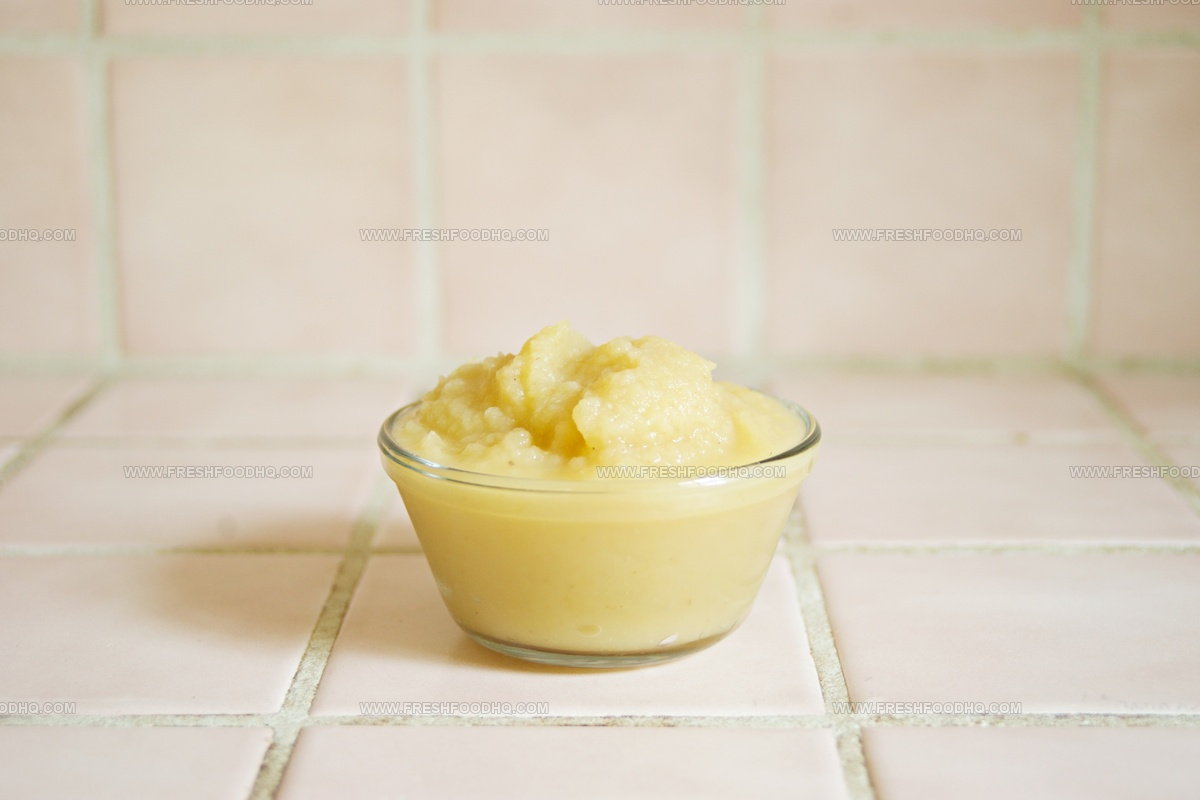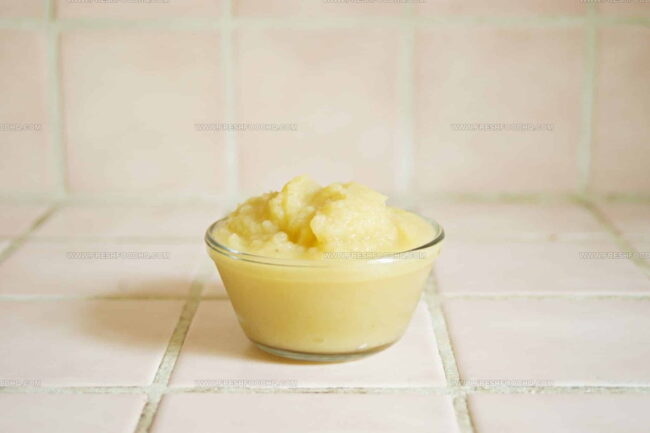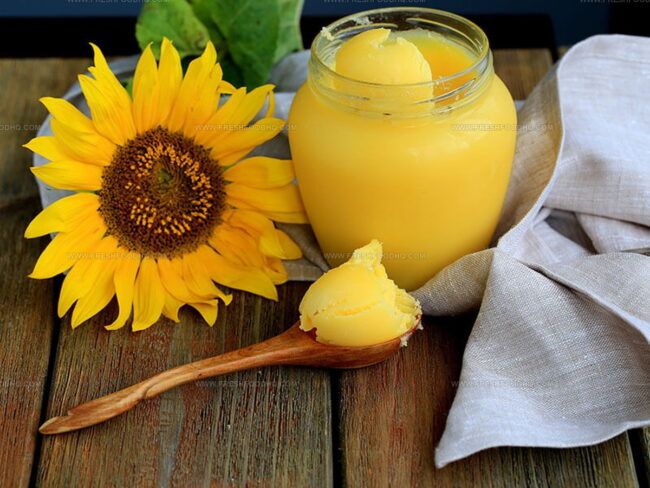What Does Ghee Taste Like? The Nutty Flavor That Elevates Meals
Ghee, a clarified butter cherished in many culinary traditions, sparks curiosity among food enthusiasts seeking new flavor experiences.
This golden, rich ingredient transforms ordinary dishes with its unique characteristics.
Cooking experts and health-conscious individuals often wonder about its distinctive profile beyond standard butter.
Ancient cultures have celebrated ghee for centuries, recognizing its remarkable versatility in kitchens worldwide.
Its complex sensory attributes make it more than just another cooking fat.
Numerous factors contribute to ghee's exceptional taste, including its preparation method and source ingredients.
Understanding these nuanced elements can elevate your appreciation for this remarkable culinary treasure.
Dive into the delicious world of ghee and uncover its delightful gastronomic secrets.
What Is Ghee?
Ghee comes from butter after removing milk bits and water through careful heating.
Butter makers separate butterfat and strain it, creating two distinct styles.
Classic French methods keep ghee light golden, while Indian techniques brown milk solids first, resulting in a darker, nuttier version.
Cooking with ghee offers a tasty experience for kitchen enthusiasts.
Ghee shares similarities with butter but brings a richer, more complex taste.
Its flavor carries subtle nutty notes and provides a distinct texture different from regular butter.
Brands might produce slightly different ghee based on milk sources and fat types.
Variations between batches remain harmless, so home cooks can confidently use this versatile ingredient.
What Ghee Tastes Like
Ghee carries a creamy sensation but doesn't match dairy butter's smooth texture.
Its feel blends between grainy and silky.
Nutty notes shine through, making it wonderful when spread across warm toast.
Regular butter might feel richer, but ghee brings a special taste that makes baked treats sing with flavor.
Cooking becomes smoother with ghee in your kitchen.
Store-bought ghee might lack dairy butter's richness, but it offers more health perks.
Cost-effective and simple to use, ghee stands out as a smart choice.
Quality matters most when selecting ghee - look for brands sourced from natural raw milk.
Selecting the right ghee ensures better taste and more wallet-friendly cooking.
How Is Ghee Different From Butter?
Ghee and butter start with different ingredients.
Butter contains butterfat from cream, water, and milk solids.
Ghee consists only of butterfat extracted from butter.
Regular butter includes lactose and casein, while ghee has almost none.
Ghee works well for someone with dairy sensitivities.
Individuals with severe allergies should still check before consuming, since tiny traces might remain.
Recipes can swap butter or coconut oil with ghee.
Ghee adds a slightly nutty flavor that enhances dishes.
Some cooking fans say ghee tastes more buttery than actual butter.
Ghee brings a rich, deep flavor similar to butter but more intense.
Its texture differs from standard butter, and color changes based on milk quality.
Ghee looks clear and shiny with a warm nutty taste.
Cooks can use ghee in multiple recipes or mix it into coffee for extra flavor.
What Does Ghee In Coffee Taste Like?
Mixing ghee with morning coffee or stirring it into hot chocolate brings a deep, smooth taste during chilly seasons.
Ghee supports digestive health through butyric acid, which helps good bacteria grow in your stomach.
Health Benefits Of Ghee
Ghee brings unique health benefits along with its rich flavor.
Learn why this clarified butter is valued in many cuisines.
Ghee Contains CLA Fatty Acid
Grass-fed butter turns into ghee packed with CLA, a special fatty acid that could lower body swelling and help your health.
Scientists have shown CLA from natural food sources might support keeping weight steady and protecting heart systems over time.
Health experts suggest adding CLA-rich foods like ghee could boost your overall wellness.
Ghee Has Lots Of Butyric Acid
Butter-like butyric acid appears in several foods, including the golden liquid known as ghee.
Its connection to butter isn't just a coincidence - this acid actually shares a similar makeup with the creamy spread.
Digestive health depends on butyric acid as a key supporter of gut wellness.
Cells in the large intestine receive energy from this compound, which helps maintain healthy tissue throughout the digestive system.
Bacterial breakdown of fiber creates this acid naturally, and you can also find it in various animal fats and plant-based oils.
Ghee Is Rich In Vitamins A, D, E, And K
Most humans need more vitamins and minerals in their daily meals.
Ghee contains important fat-soluble vitamins A, D, E, and K.
Sunlight can be scarce in chilly regions, which might lead to vitamin D shortages.
Without enough vitamin D, bodies struggle to absorb calcium and keep bones and teeth strong.
Ayurvedic golden milk often includes ghee because vitamins A and E can boost immune system health.
Ghee Provides MCT Fats
Medium-chain triglycerides (MCTs) are special fatty acids that quickly provide energy for your body.
You can find MCTs in substances like ghee, coconut oil, and palm oil.
Unlike long-chain fatty acids found in most vegetable and animal fats, MCTs digest faster and move directly to your liver for processing.
Such quick metabolism might help increase energy while stopping extra fat from building up.
Scientists have discovered something interesting about brain fuel.
While most people think glucose powers the brain best, research shows ketones from fats can work equally well or even better.
Many individuals report sharper thinking, better focus, and improved concentration after adding more MCTs to their diet.
Because of these benefits, athletes often choose MCTs as their preferred energy source.
Why Can Ghee Be Harmful?
Ghee carries health risks that make it problematic for many individuals.
Does Ghee Need Refrigeration?
Ghee stays fresh longer compared to regular butter because it has lower water content.
You can leave it out without worrying about quick spoilage, and it works well on many dishes like toast and vegetables.
Refrigeration becomes important once you open a jar of ghee.
Storing opened ghee in the cold helps keep its rich flavor and quality intact over weeks and months.
Salt or vinegar might help preserve ghee when storing at room temperature.
These simple ingredients can extend the shelf life of your ghee.
Refrigerated ghee can remain good for six to twelve months before it starts to go bad.
Keeping it cool protects its quality and lets you enjoy it for a long time.
Ways To Cook With Ghee
Ghee works well as a cooking oil since it does not change the taste of food when heated, unlike some vegetable oils that can impact flavor.
Cooking methods like frying samosas become easier with ghee, which keeps the food's quality intact during high-temperature preparation.
Chefs often choose ghee for classic Indian recipes such as Sohan papdi chaat, barfi, and sweet treats like kulfi.
Melting quickly and smoothly, ghee serves as a rich seasoning that adds depth to many dishes.
Cooks seeking true Indian taste profiles often select ghee because of its unique and authentic flavor characteristics.




Samantha Lee
Recipe Developer & Content Creator
Expertise
Plant-based and vegetarian recipes, Recipe testing and development, Food blogging and digital content creation, Culinary education and workshops
Education
Oregon Culinary Institute (Portland, OR)
Samantha sees cooking like painting, every fresh herb, every juicy tomato, a new splash of color on a canvas.
After graduating from Oregon Culinary Institute, she blended her love of global cuisines and plant-based cooking into recipes that feel fresh, fearless, and full of heart.
Samantha’s kitchen is a place where comfort food gets a modern remix and every meal feels like a little adventure. When she’s not cooking, she’s out exploring farmers’ markets, sketching new recipe ideas, or getting her hands dirty in a community garden.